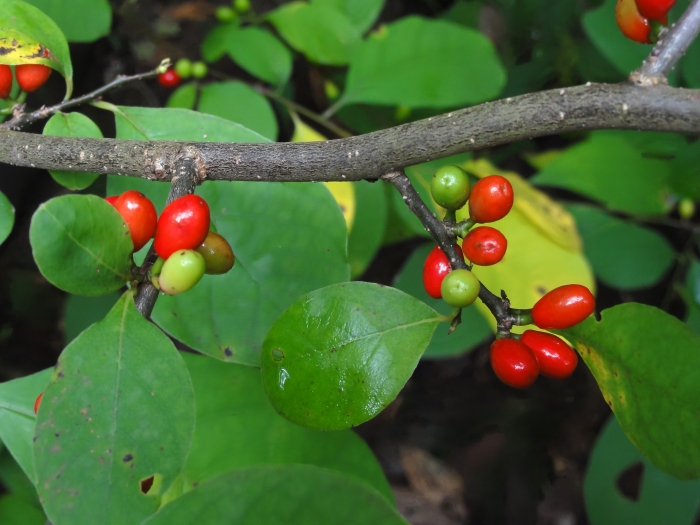Northern Spicebush
(Lindera benzoin)
Northern Spicebush (Lindera benzoin)
/
/

R. A. Nonenmacher
CC BY-SA 4.0

















































































Estimated Native Range
Summary
Northern Spicebush is valued for its early spring flowers, which provide a nectar source for pollinators, and its aromatic leaves, which can be used in teas. It is commonly used in naturalized plantings, as an understory shrub in shaded gardens, and for habitat restoration projects. It prefers moist, well-drained soils but can tolerate medium or slow drainage. While it can grow in full sun, it thrives in part shade to full shade conditions. The extensive root system makes transplanting mature plants difficult, so propagation from seed is recommended.CC BY-SA 4.0
Plant Description
- Plant Type: Tree, Shrub
- Height: 6-12 feet
- Width: 6-12 feet
- Growth Rate: Slow
- Flower Color: Yellow, Green
- Flowering Season: Spring
- Leaf Retention: Deciduous
Growth Requirements
- Sun: Full Sun, Part Shade
- Water: Medium
- Drainage: Medium, Slow
Common Uses
Bee Garden, Bird Garden, Border Plant, Butterfly Garden, Deer Resistant, Drought Tolerant, Edible*Disclaimer: Easyscape's listed plant edibility is for informational use. Always verify the safety and proper identification of any plant before consumption., Fire Resistant, Fragrant, Low Maintenance, Rabbit Resistant, Street Planting, Water Garden
Natural Habitat
Understory of deciduous forests, often found in moist areas, stream banks, and woodlands
Other Names
Common Names: , Spicebush, Wild Allspice, Benjamin Bush
Scientific Names: , Lindera benzoin, Lindera benzoin var. benzoin, Laurus benzoin, Benzoin benzoin, Benzoin odoriferum, Benzoin aestivale f. xanthocarpum, Benzoin geniculatum, Calosmon acstivale, Calosmon benzoin
GBIF Accepted Name: Lindera benzoin (L.) Meisn.